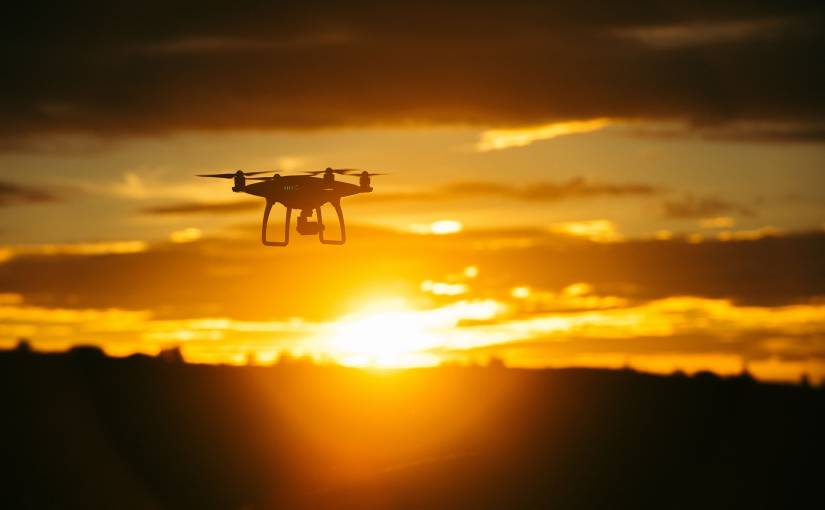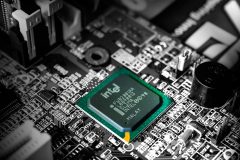On Oct 11, 2019, the high precision surveillance along 50 km of the entire route traversed by Chinese President Xi Jinping’s convoy in India by four drones designed by Anna University made us wonder at the possibilities spurting from something like 3 cm resolution at an altitude of 100 m.
But on the other hand, the drone attack in Saudi Arabia in Sep 2019, which mopped away some five percent of the global oil supply, and reverberated a difficult question. Will drones continue as the benefactors of humanity or they will become a weapon for mass destruction and terrorism in the future?
Three factors exist with drones. The need for good technology, huge investment, and fast adoption. All three levels can conspire in a scenario where the antithetical opportunities for prosperity and destruction may coexist subject to our drones of the future. See our review of the best drones.
Introduction to Drones
A drone is an unmanned aerial vehicle (UAV) that can be made to fly autonomously by a dedicated remote unit. It has the capability to perform certain operations in the air dictated by the computer program whereas flight mode controls are assisted by tracking devices such as GPS.
The origin of drones attributes to the need realized by the government and military for intelligent warfare devices since the 1960s. During the Vietnam War, the US Army actively used drones for surveillance purposes followed by the later use by the Israeli military in 1982 during the Lebanon War.
However, with the advancement in technology, drones were later customized into different forms for many commercial applications. To the great benefit of mankind have come assistance in accessing harrowing situations, finding missing people, creating 3D maps, surveying landscape, wildlife conservation, pipeline inspection, traffic monitoring, weather forecasting, and firefighting, agriculture, photography, video making, academic projects.
Even delivery services — especially in pandemic situations, may find a comforting benefit for all of us.
The cost of drones depends on size and functionality. The mini version drones which fit in the palm may cost as less as $100 whereas the military-grade drones which fit in a backpack can cost tens of millions of dollars. One of the largest military drones is 47.6 feet long MQ-4 Global Hawk which is wider than a Boeing 737 airliner.
One of the most popular drones in the market was the DJI Phantom 3 known for professional cinematography. The drone uses an advanced technology that is inherited by the latest drones such as the Mavic Air, Phantom 4 Pro, Inspire 2, Walkera Voyager 5, etc.
How Drones Work
A drone is made of light composite material to reduce weight and provide high altitude coverage. The motor operation is achieved by a compact high-torque multi-propeller system that makes this device highly independent and provides fail-safe features in a way that even if any motor inside this device stops working; it will keep on flying as it gets support from propellers that are working in a group.
These propellers are operated by remote ground control systems (GSC) using radio waves, including Wi-Fi. Most of these devices contain removable batteries so that it can stay in the air for the long run. The flight time can increase with the use of powerful batteries in design.
The rates of rotation and other parameters are relayed by the gyroscopes and sensors to computers that use algorithms to make adjustments to the positioning of the drone. This keeps the drone balanced, hovering consistently and moving forward, backward, or vertically.
Computer algorithms assist the drone operator in controlling the drone’s descent. While the drone pilot can control where and when the drone moves, it is the computer positioning algorithms that ensure an automatic stability level.
Navigational systems, such as GPS, are fixed in the nose of a drone which communicates the precise location of the drone. Optionally, an onboard altimeter can communicate the altitude vectors and keep the drone at a specific altitude, if commanded by the controller.
Evolving Technologies
The latest high tech drones of today are successfully outdoing previous versions in a variety of ways.
- Collision avoidance systems – Obstacle detection sensors are used to scan the surroundings, while software algorithms produce the images into 3D maps allowing the drone to sense and avoid obstacles. The most popular example is the latest DJI Mavic 2 Pro and Mavic 2 Zoom which have obstacle sensing on all 6 sides.
- No Fly Zone Feature – In order to increase flight safety and prevent accidents in restricted areas regulated and categorized by FAA (Federal Aviation Administration), the latest drones from DJI and other manufacturers include a “No Fly Zone” feature which gives a warning on entry into these zones.
- FPV Live Video Transmission – The FPV (First Person View) based technology consists of a video camera which is mounted on the drone and broadcasts the live video using the radio signal to the pilot on the ground. This gives real-time onboard experience to the ground pilot allowing the drone to fly much higher and further than one can from looking at the aircraft from the ground.
- Smart Interface – Most of the drones today can be flown by a remote controller or from a smartphone app, which can be downloaded from Google Play or the Apple Store. Such a manufacturer-specific app allows for full control of the drone.
New Areas and Business Prospects
The drones used for commercial applications are flourishing. This shall give different businesses a large scale opportunity to boost their revenue and help global economies grow in unimaginable ways.
- Shipment services – According to the recent reports, Google and Amazon are developing their own drones so that shipment can be delivered by air in a much shorter time. Facebook is planning to develop giant drones to carry the signal to remote locations for internet access.In 2018, Boeing announced it had prototyped an unmanned electric VTOL cargo air vehicle (CAV) that can carry up to a 500-pound payload. As a part of WEF’s “Medicine from the sky” initiative, Telangana Govt has adopted a framework to use drones for last-mile delivery of essential medical supplies such as blood and medical samples in an effort to increase access to health care to communities across the state. Drones are also in use by news reporters to gather information from inaccessible locations.
- Collaboration with IoT – An integrated system of Drones with on-ground IoT sensor networks can help agricultural companies monitor land and crops, energy companies survey power lines and operational equipment and insurance companies monitor properties for claims and policies. In 2015, an experiment was conducted in Austin, Texas in which drones successfully spotted the IoT networks that were present in residential and business areas of the city.
- Measurement and estimation – Drones can measure and record the height of crops, buildings, and mountains. This is done by using remote sensing technology called Lidar that illuminates the target with a laser and calculates distance and height by measuring what is reflected back.
- Atmospheric studies – Drones can fly to unsafe and inaccessible areas to measure air quality, check for the presence of specific micro-organisms or atmospheric elements, and even detect earthquakes.
- Live recording – Television sports networks use Drones nowadays to capture sporting event footage that would otherwise be difficult to acquire.
Given such sprawling grounds of new applications, here are some recent business predictions on drone economy:
- PricewaterhouseCoopers has valued the drone-based businesses service market at more than $127 billion, with the top industries being infrastructure at $45.2 billion, agriculture at $32.5 billion, and transportation at $13.0 billion.
- The Association for Unmanned Vehicle Systems International (AUVSI) predicts the drone industry will create more than 100,000 U.S. jobs and add $82 billion to the U.S. economy by 2025.
- Goldman Sachs predicts a $100 billion market for drones between 2016 and 2020, with the military making up the bulk of it with $70 billion spending. It is estimated that consumer drones will take a $17 billion share of that market, with commercial and civil government use making up $13 billion.
- The United Nations Institute for Disarmament Research quoted in its 2017 report that the global drone market may increase four times by 2022 from its 2015 value and surpass a net worth of $22 billion that includes drones used for both military and non-military purposes.
The above data clearly indicates that drones are here to stay, and so is the threat they pose if they land in unsafe hands.
Threats due to Proliferation
No matter how impressive drones might appear, for now, they can become dangerous weapons in the future. The increasing popularity of drones and ease of usage is a reason for a number of privacy, security, and safety concerns. Hence the importance of finding a way for them to safely coexist with manned aircraft is growing increasingly urgent.
- Privacy threats – These mischievous spies in the sky can take pictures of individuals in their homes or other private locations. For example, a magazine like Splash News assembled about 200 photo sets of small episodes from the lives of the celebrities. Drones have also been found in potentially unsafe areas such as urban locations and near airports.
- Collisions – The increasing drone traffic may lead to midair collisions and loss of drone control. The threat of drones flying too close to commercial aircraft has prompted calls for regulation. For instance, in June 2019, Iran shot down a US military surveillance drone. The impact was the deterrence of major airline routes across the world to avoid attack by mistake on entering the country’s airspace.
- The possibility of civil attacks – Drones are relatively cheaper in comparison to conventional weapons and yet can achieve far more destructive results. It is this easy-to-procure, easy-to-operate, and foolproof technology that makes it an attractive weapon of mass destruction. In a 2017 study, the United Nations Institute for Disarmament Research (UNIDR) said that the same characteristics that make drones attractive to militaries can make armed drones particularly susceptible to misuse. According to a report in the Penn Political Review, many armed groups such as the Houthi rebels, Lebanese Hezbollah, Hamas, Libyan militias, Ukrainian separatists, Kurdish Peshmerga, Al Qaeda in Syria, Colombian FARC are known to possess and use drones. Besides, the recent case of the Saudi Aramco oil facility drone attack proves how the expensive anti-missile detector systems turn ineffective for drones because of their low altitudes and slow speed.
- Hacking – Drones in some ways are like flying computers carrying an operating system and software with programmable code that can be hacked. Drones have been developed to fly around seeking other drones, hacking into their wireless network, disconnecting the owner, and taking over the control.
Safety Regulations by the Government
Over time, regulators around the world have taken steps to prevent the possible misuse of drones.
- China: Any drone weighing more than 15 pounds or flying higher than 400 feet requires a license from the Civil Aviation Administration of China (CAAC).
- UK: The Civil Aviation Authority (CAA) mandates the registration for drones weighing more than a half-pound and prohibits flying above 500 feet.
- U.S: FAA specifically mandates certain regulations such as Remote Pilot Certificate for commercial drones and registration for speeds up to 100 mph, daylight-only operations with appropriate anti-collision lighting, and the prohibition of UAV operation over non-participants under a covered structure or inside a covered stationary vehicle.
- Europe: SESAR (Single European Sky ATM Research) is planning the roll-out of U-space foundation services, including e-registration, e-identification, and drone geofencing and full integration with manned aviation for the avoidance of interference and collision with commercial aircraft.
Conclusion
Drones are the spectacular gifts of technology. Their expansion at large scale is inspiring almost all the countries to develop their drones for different applications. A drone of today is a combination of all advanced technologies like microcontrollers, GPS, Wi-Fi, and sensor units. They need to work in a synchronized fashion which is giving business to many companies and start-ups. Besides, the profusion of drone kits, easy to learn programming languages, and course material on the internet makes it easy for novices to build and code a drone.
The role of the government is vital in such a scenario to enforce the development of low-cost detection systems. Such systems should be advanced enough to spot malevolent drones and to build strong regulations. Lest the trespassers will misuse this precious technology.


















